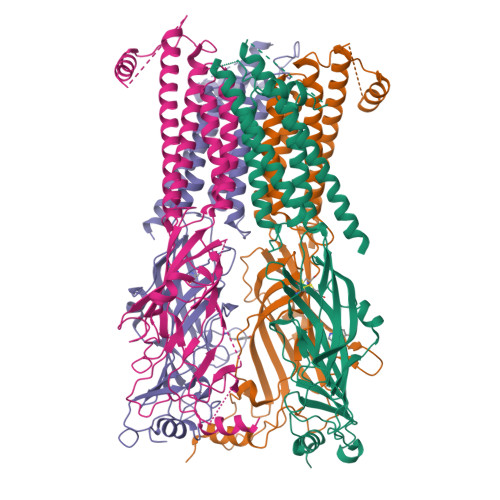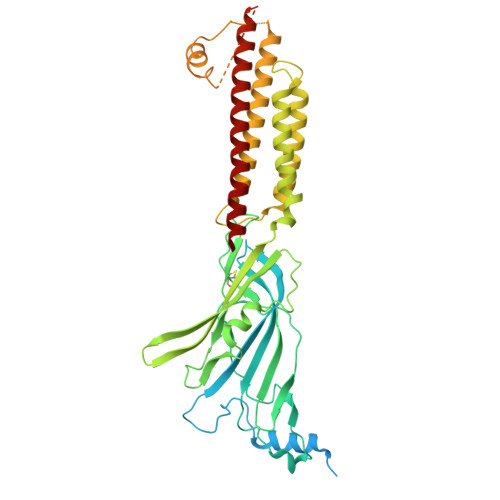Structure of tetrameric forms of the serotonin-gated 5-HT3 A receptor ion channel.
Introini, B., Cui, W., Chu, X., Zhang, Y., Alves, A.C., Eckhardt-Strelau, L., Golusik, S., Tol, M., Vogel, H., Yuan, S., Kudryashev, M.(2024) EMBO J 43: 4451-4471
- PubMed: 39232129
- DOI: https://doi.org/10.1038/s44318-024-00191-5
- Primary Citation of Related Structures:
8C1W, 8C1Z, 8C20, 8C21 - PubMed Abstract:
Multimeric membrane proteins are produced in the endoplasmic reticulum and transported to their target membranes which, for ion channels, is typically the plasma membrane. Despite the availability of many fully assembled channel structures, our understanding of assembly intermediates, multimer assembly mechanisms, and potential functions of non-standard assemblies is limited. We demonstrate that the pentameric ligand-gated serotonin 5-HT3A receptor (5-HT3AR) can assemble to tetrameric forms and report the structures of the tetramers in plasma membranes of cell-derived microvesicles and in membrane memetics using cryo-electron microscopy and tomography. The tetrameric structures have near-symmetric transmembrane domains, and asymmetric extracellular domains, and can bind serotonin molecules. Computer simulations, based on our cryo-EM structures, were used to decipher the assembly pathway of pentameric 5-HT3R and suggest a potential functional role for the tetrameric receptors.
Organizational Affiliation:
Max Planck Institute of Biophysics, Frankfurt am Main, Germany.



















